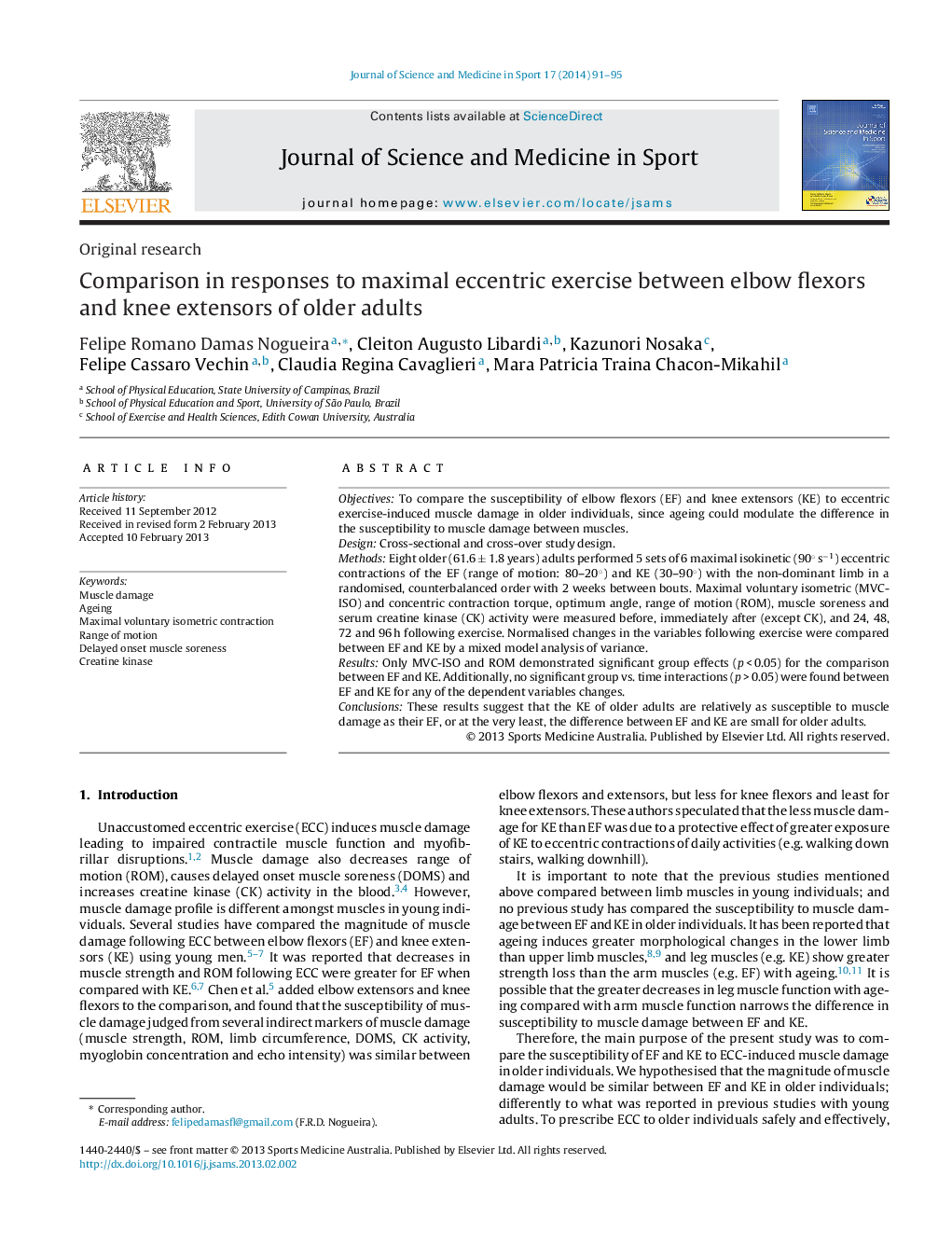| Article ID | Journal | Published Year | Pages | File Type |
|---|---|---|---|---|
| 2700608 | Journal of Science and Medicine in Sport | 2014 | 5 Pages |
ObjectivesTo compare the susceptibility of elbow flexors (EF) and knee extensors (KE) to eccentric exercise-induced muscle damage in older individuals, since ageing could modulate the difference in the susceptibility to muscle damage between muscles.DesignCross-sectional and cross-over study design.MethodsEight older (61.6 ± 1.8 years) adults performed 5 sets of 6 maximal isokinetic (90° s−1) eccentric contractions of the EF (range of motion: 80–20°) and KE (30–90°) with the non-dominant limb in a randomised, counterbalanced order with 2 weeks between bouts. Maximal voluntary isometric (MVC-ISO) and concentric contraction torque, optimum angle, range of motion (ROM), muscle soreness and serum creatine kinase (CK) activity were measured before, immediately after (except CK), and 24, 48, 72 and 96 h following exercise. Normalised changes in the variables following exercise were compared between EF and KE by a mixed model analysis of variance.ResultsOnly MVC-ISO and ROM demonstrated significant group effects (p < 0.05) for the comparison between EF and KE. Additionally, no significant group vs. time interactions (p > 0.05) were found between EF and KE for any of the dependent variables changes.ConclusionsThese results suggest that the KE of older adults are relatively as susceptible to muscle damage as their EF, or at the very least, the difference between EF and KE are small for older adults.
